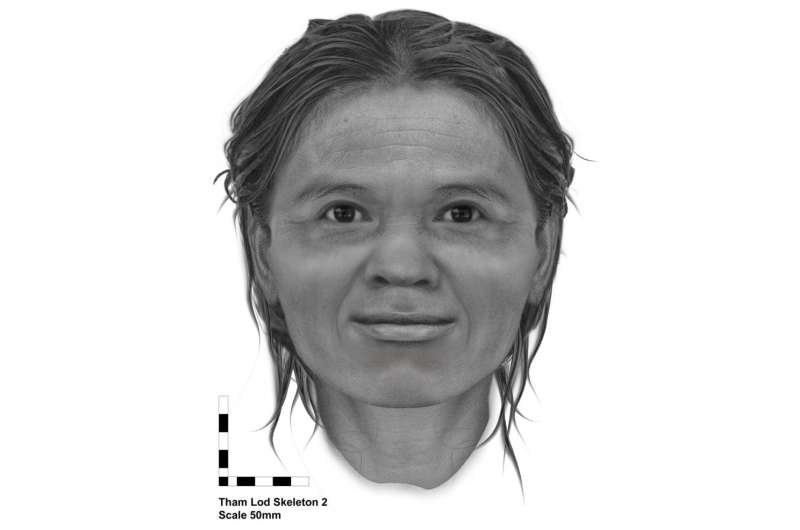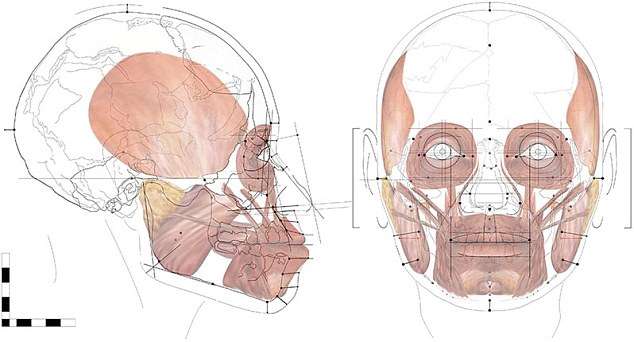Credit: Antiquity (2017). DOI: 10.15184/aqy.2017.18
(Phys.org)—An international team of researchers has used a relatively new facial approximation technique to reconstruct the face of a woman who lived approximately 13,640 years ago in what is now Thailand. In their paper published in the journal Antiquity, the team describes the condition of the remains, where they were found, the methods used to ascertain details about the remains and the technique used to reconstruct the woman's face.
Back in 2002, a team of archeologists discovered human skeletal remains in the Tham Lod rock shelter located in northern Thailand. The remains consisted of skull parts, teeth and some bones. Subsequent study of the remains led to the finding that the body was female and that she was likely part of the first group of people to move into Southeast Asia approximately 13,600 years ago—during the Late Pleistocene. The age of the woman at her death was calculated to be between 25 and 35 years old, and she was found to have stood just five feet tall. In this new effort, the researchers took a relatively new approach to create an image of the woman's face.
The team started with the skull measurements, then to fill in the details, they tapped into a global database that holds statistical information about average physical characteristics of people from around the world—such as measurements of the skull, skin tone, muscle and soft facial tissue residing beneath the skin. After filtering, they wound up using data from 720 contemporary women living in 25 countries. They then used averages of what they found to create an imaged representation of the woman—not an actual portrait, of course, taking care to ensure that European populations were not over-represented.
The team reports that they deliberately chose to avoid the use of forensic facial reconstruction techniques because they believe it to be scientifically invalid. They also noted that they took into account that that woman would be anatomically modern, including her face, which is why they used statistical data from modern female faces. They also took care to avoid using the particular style that has become popular in depicting facial features of people from the past with wild expressions or appearances.
Credit: Antiquity (2017). DOI: 10.15184/aqy.2017.18
More information: Susan Hayes et al. A Late Pleistocene woman from Tham Lod, Thailand: the influence of today on a face from the past, Antiquity (2017). DOI: 10.15184/aqy.2017.18
Abstract
Creating a facial appearance for individuals from the distant past is often highly problematic, even when verified methods are used. This is especially so in the case of non-European individuals, as the reference populations used to estimate the face tend to be heavily biased towards the average facial variation of recent people of European descent. To evaluate the problem, a facial approximation of a young woman from the Late Pleistocene rockshelter of Tham Lod in north-western Thailand was compared against the average facial variation of datasets from recent populations. The analysis indicated that the Tham Lod facial approximation was neither overtly recent in facial morphology, nor overtly European. The case is of particular interest as the Tham Lod individual probably belonged to a population ancestral to extant Australo-Melanesian peoples.
Journal information: Antiquity
© 2017 Phys.org
























